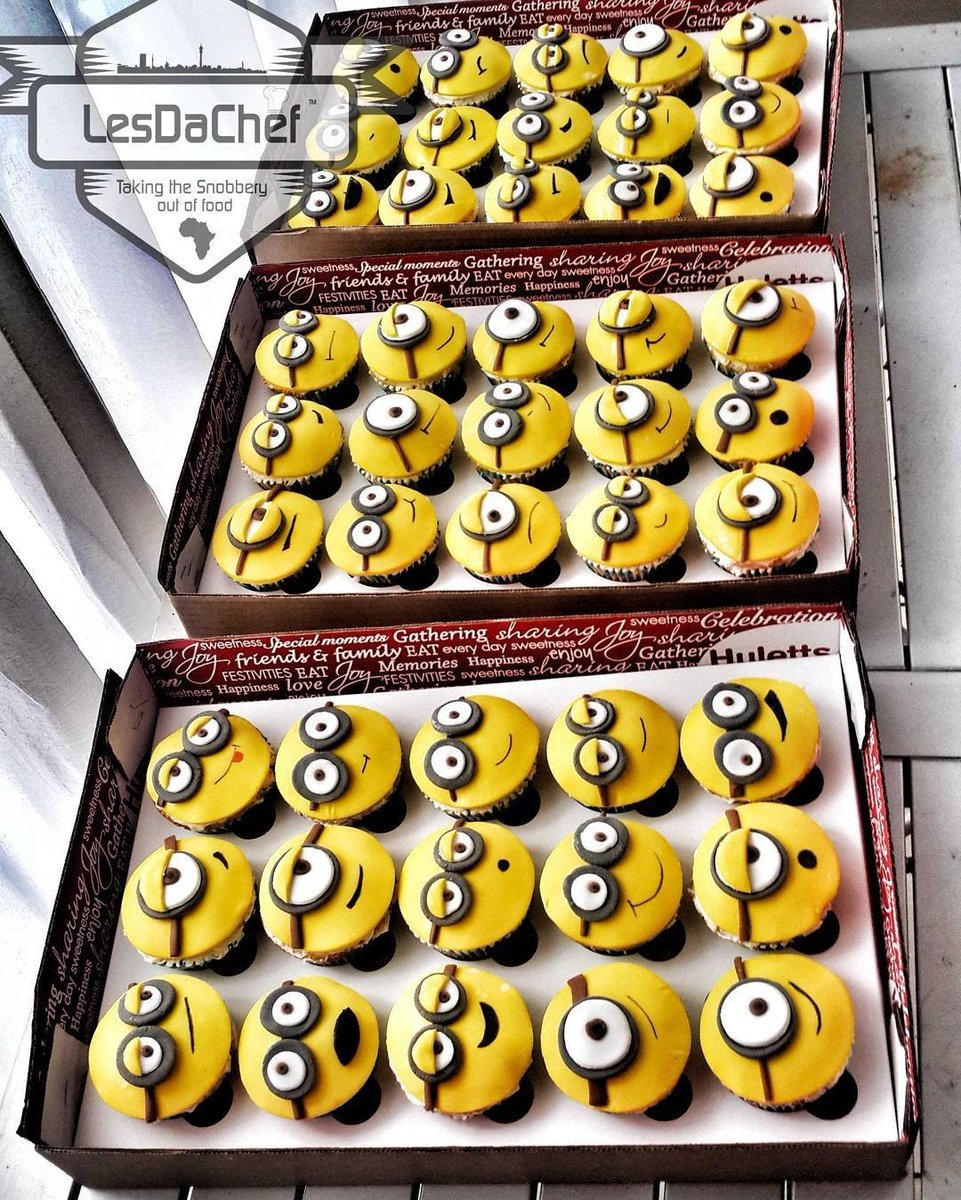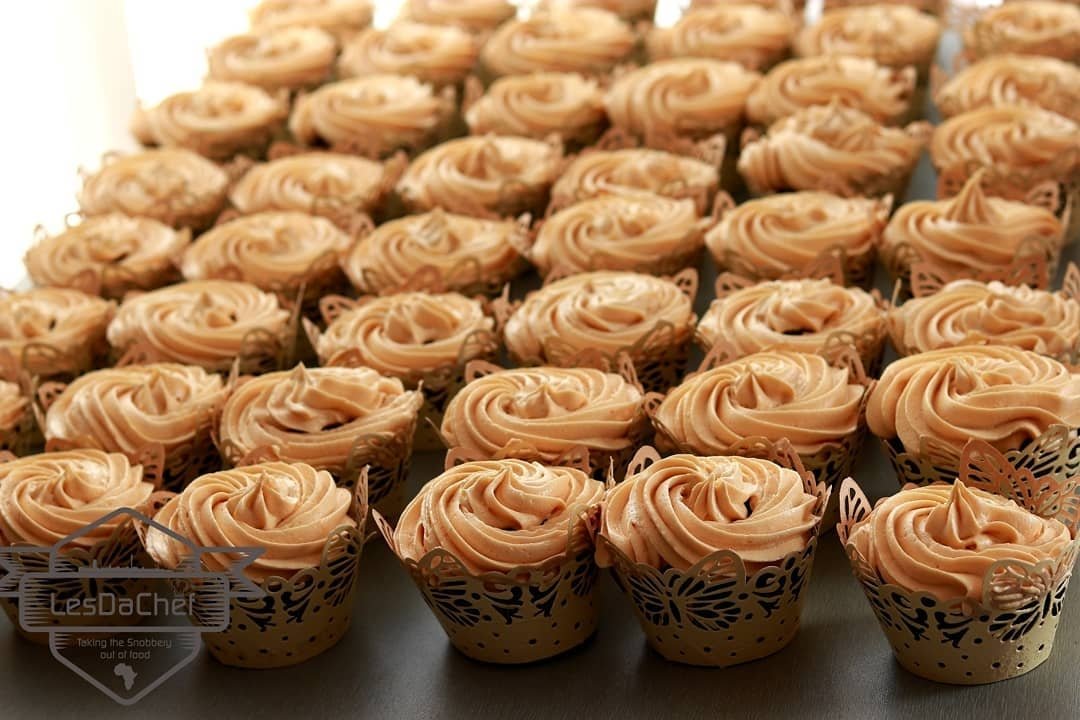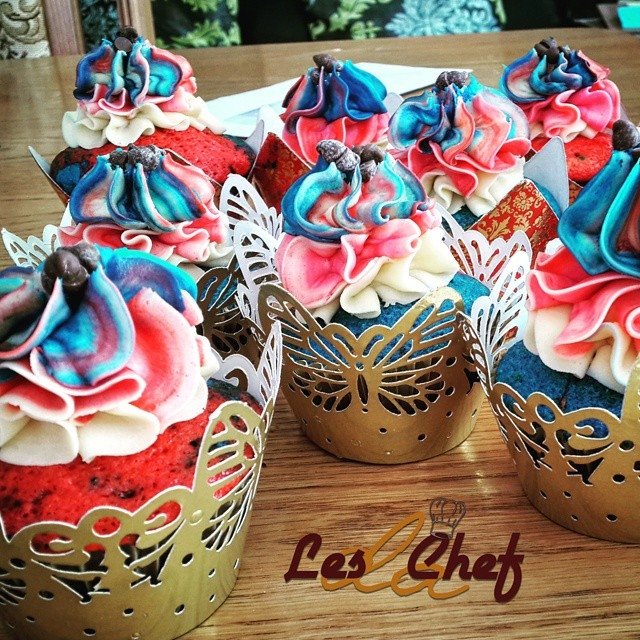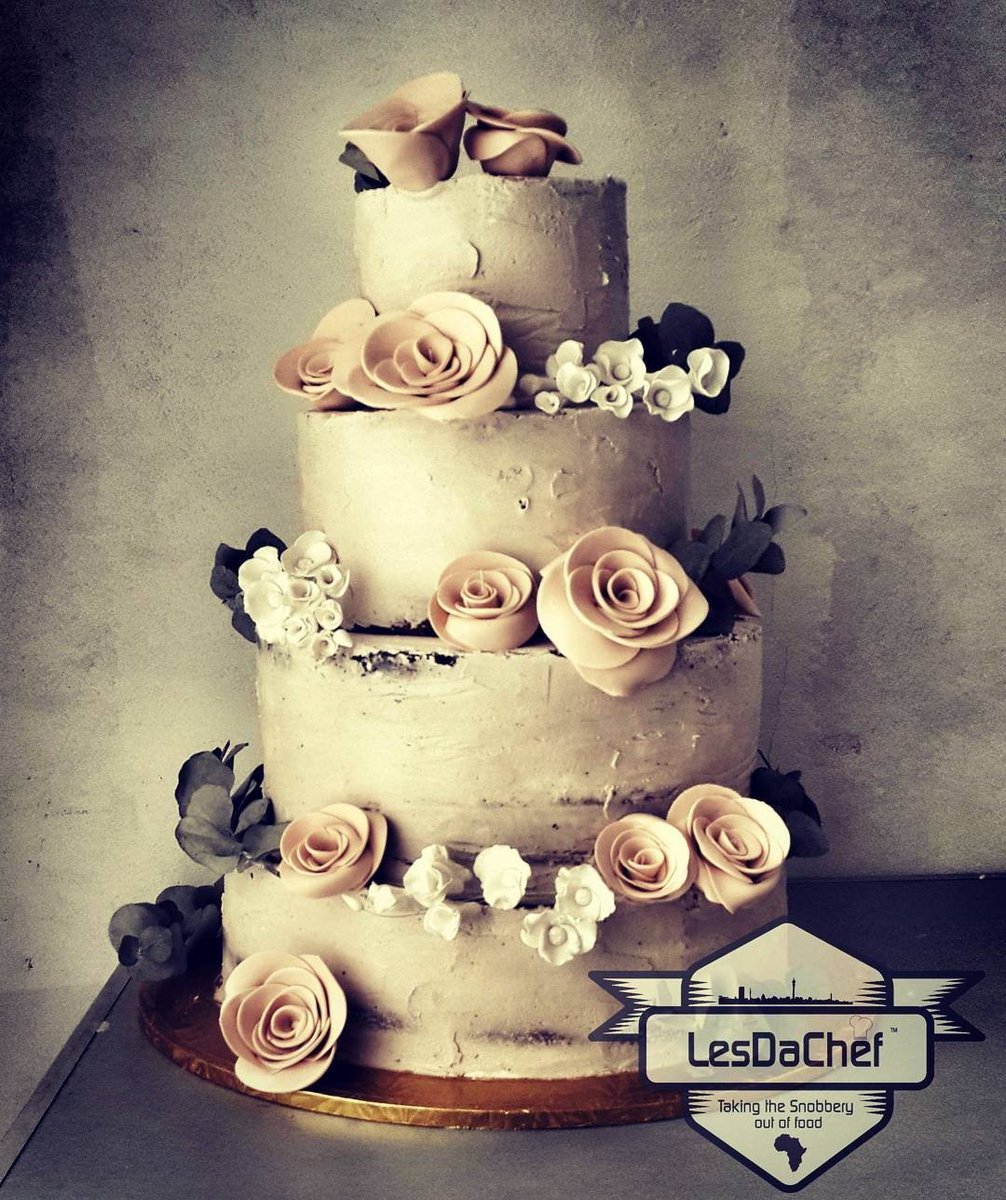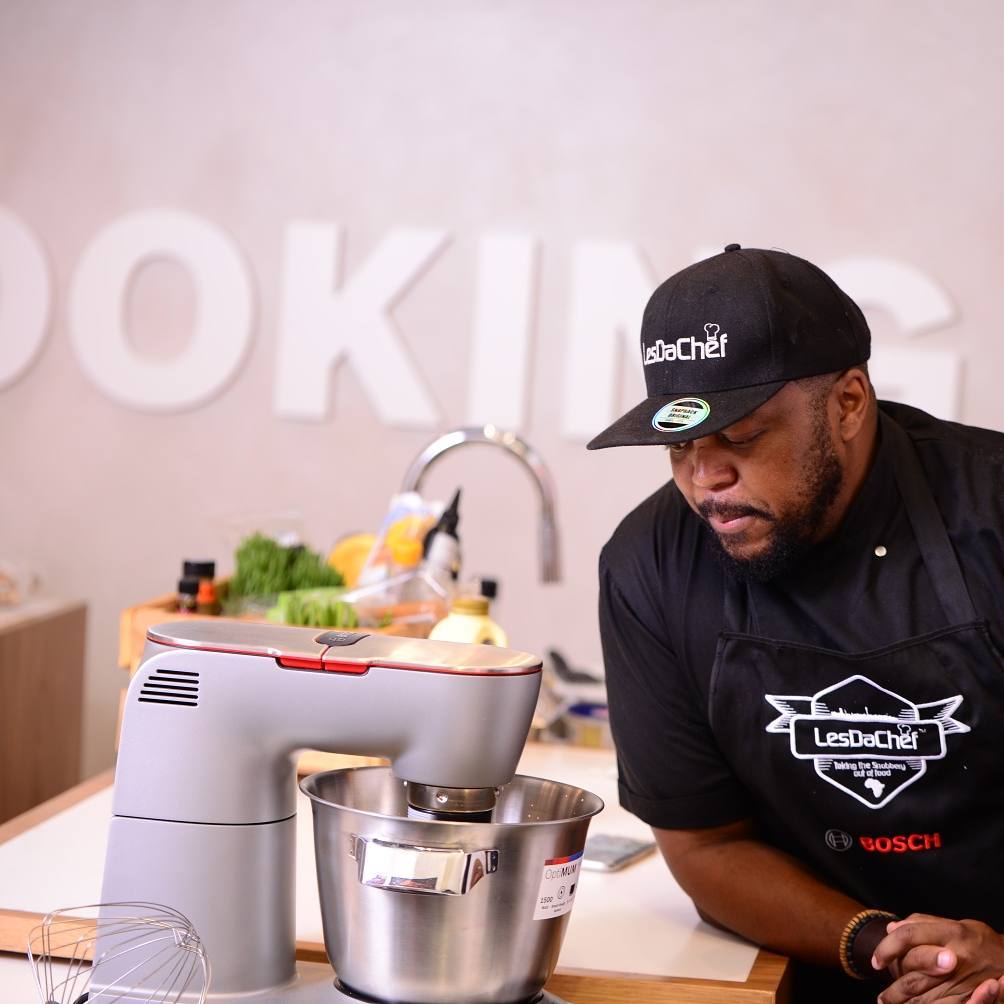Ok #LesFoodFacts time. All about baking, pastry and desserts. Will be focusing on it this whole week in leading up to our baking class this weekend with @BoschHomeSA
First topic: the fundamentals of baking. A thread
First topic: the fundamentals of baking. A thread
To understand cakes and baking you need to understand that it& #39;s all science. Every single step in a cake recipe is there for an important reason. Unlike cooking hot food, you can& #39;t just wing it. It& #39;s why pastry chefs are one of the highest paid chefs in the kitchen
"Cream the butter and sugar" or "beat the butter and sugar together until creamy and light". This is one of the most important steps and people always rush it or some don& #39;t even do it at all.
You need to beat the sugar and butter til it resembles a very thick yoghurt
You need to beat the sugar and butter til it resembles a very thick yoghurt
The beating of the sugar and butter breaks up and partly dissolves the sugar and also allows for the butter to melt evenly when baking. It also helps make your cake batter lighter...which is the main goal in the beginning.
When a recipe says BUTTER don& #39;t use margarine somblief.
When a recipe says BUTTER don& #39;t use margarine somblief.
Margarine melts differently to butter and has water in it (some have up to 30% water in them) and it also has extra salt. Salt is a regulator when baking but in small quantities, too much salt will cause your cake to flop.
Your butter must always be at room temperature for cakes. For scones and certain biscuits it will usually be ice cold. Cold butter makes for more crumb in your baked goods, which is what you want with biscuits and scones...but not with cakes.
Your eggs should also be at room temperature. You& #39;ve gone and beaten your sugar and butter til fluffy...by adding eggs straight from the fridge you& #39;re defeating what you just did.
Also, putting a cold cake batter into a hot oven = flopped cake.
Also, putting a cold cake batter into a hot oven = flopped cake.
Most cake recipes start with those steps above. Beat the butter, sugar...add eggs. That& #39;s standard. Then they& #39;ll ask you to mix the dry ingredients together. We& #39;re not trying to make you wash mountains of dishes, there& #39;s a reason why you mix the dry ingredients separately...
Baking powder and bicarb of soda start working as soon as they get in contact with liquids or acids. You wanna delay this for as long as possible. Hence mixing all the dry ingredients separately. Also, by mixing them separately it reduces the amount of time you& #39;ll beat the batter
You want to beat the cake batter for as short a time as possible. The goal is to keep as much air in your batter as possible. That& #39;s part of the reason we sieve the dry ingredients as well. It aerates them, removes anything nasty and makes them easier to stir into the wet
Ok, what do the ingredients mean and do?
Bicarb of soda is what American recipes refer to as baking soda. Needs an acid to work. It basically foams up and creates bubbles...which helps your cake batter to rise. Recipes with bicarb have yoghurt, buttermilk, lemon juice or vinegar
Bicarb of soda is what American recipes refer to as baking soda. Needs an acid to work. It basically foams up and creates bubbles...which helps your cake batter to rise. Recipes with bicarb have yoghurt, buttermilk, lemon juice or vinegar
Baking powder is a mix of bicarb and a weak acid powder. The weak acid is activated by a liquid...and then causes the bicarb to foam & rise. Recipes that have baking powder don& #39;t need the addition of extra acids.
Self raising flour is normal flour mixed with salt & baking powder
Self raising flour is normal flour mixed with salt & baking powder
Ok, now you& #39;ve mixed your batter...if you put it into a cold oven and then turn the oven on = flopped cake.
You need to preheat your oven. The constant regular heat is what makes your cake bake evenly. The first thing that happens is the butter melts. This then melts the sugar
You need to preheat your oven. The constant regular heat is what makes your cake bake evenly. The first thing that happens is the butter melts. This then melts the sugar
The melting sugar then causes heat which causes the liquids to steam, the raising agent (bicarb or baking powder or aerated eggs) works hand in hand with the rising steam and cook the starches, which then stiffen with time. All a scientific reaction.
Cold oven defeats all that.
Cold oven defeats all that.
Opening your oven door also defeats all that as it let& #39;s the steam out.
When your cake is baking, the rising steam and chemical reactions causes a vacuum effect...never ever open your oven door during the first 20mins. You lose that vacuum = flopped cake.
When your cake is baking, the rising steam and chemical reactions causes a vacuum effect...never ever open your oven door during the first 20mins. You lose that vacuum = flopped cake.
Stabbing your cake with a fork to check if it& #39;s ready = flopped cake.
You& #39;re basically puncturing an inflating tyre.
Shaking your cake to see if its ready = flopped cake. You& #39;re shaken the rising bubbles out.
You& #39;re basically puncturing an inflating tyre.
Shaking your cake to see if its ready = flopped cake. You& #39;re shaken the rising bubbles out.
If your cakes ALWAYS flop even though you don& #39;t do the things I& #39;ve mentioned above then it means your oven is the problem. Change the rubber seal on the door and tighten the door hinges.
If your cakes always have that domed look, like a certain former presidents head, it means your oven was too hot or your cake tin conducts heat too quickly. You can counter this by baking your cake in a water bath (like creme brulee) or wrapping your tin with a wet kitchen towel
Why use unsalted butter when baking? Cause you always want to be in control of the quantities you add to a cake. Rather add your own salt than use salted butter.
Icing. My butter icing ratio is 2:1. For example - 100g butter to 200g icing sugar. How do I get it so smooth? I beat it for a minimum of 15mins on the highest speed of my mixer. I don& #39;t add milk or anything else becides flavoured essences or extracts
You can always use a cake recipe to make cupcakes but the opposite is not always true. Using a cupcake recipe to make a cake won& #39;t always work out. The ratios and surface areas of baking a cake are a factor.
Lastly is a standing mixer a must have? If you want consistency and perfect looking cakes, yes it is. Also saves your arms a whole lot of time. I use this one, it& #39;s the @BoschHomeSA OptiMUM
Ok, that& #39;s the basics of baking. Will cover bread, fake ingredients, dessert hacks and tricks, industry tips I& #39;ve learned in my career etc over the next few days via #LesFoodFacts .  https://abs.twimg.com/emoji/v2/... draggable="false" alt="🤘🏾" title="Sign of the horns (medium dark skin tone)" aria-label="Emoji: Sign of the horns (medium dark skin tone)">
https://abs.twimg.com/emoji/v2/... draggable="false" alt="🤘🏾" title="Sign of the horns (medium dark skin tone)" aria-label="Emoji: Sign of the horns (medium dark skin tone)">
Oh, last one. If you want moist cakes you need to remove the cake from the oven a few minutes before it is fully baked. Leave it wrapped with a kitchen town in the cake tin on your counter. The residual heat will continue finishing off the baking process
*towel  https://abs.twimg.com/emoji/v2/... draggable="false" alt="🙄" title="Face with rolling eyes" aria-label="Emoji: Face with rolling eyes">
https://abs.twimg.com/emoji/v2/... draggable="false" alt="🙄" title="Face with rolling eyes" aria-label="Emoji: Face with rolling eyes">

 Read on Twitter
Read on Twitter